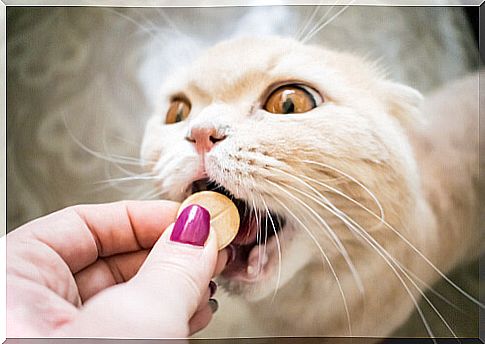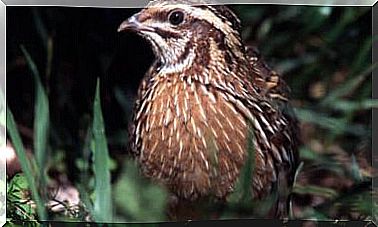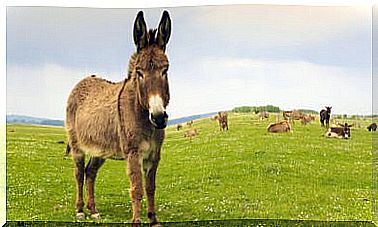Tapeworm In Cats: Everything You Need To Know

Parasites are living beings that, in a specific or lasting way, obtain some type of benefit from the host with which they interact. There are many terms to divide these types of animals, and their life cycles are usually very complex, in many cases passing through more than one host before reaching adulthood. Today we are going to show you the case of tapeworms and cats: both the biological cycle, as well as symptoms and treatments.
Meeting the parasite
Tapeworms are a genus of flatworms in the tapeworm family, and are considered obligate parasites of various groups of mammals. As a curious fact, some of the species included in this genus have humans as their definitive host, but due to their easy contagion capacity, they can be transmitted to pets such as dogs or cats.
These parasites are worm-shaped, often several meters long. In the scolex or head they have various suction cups that they use to fixate on the intestinal mucosa of their hosts, feeding on the nutrients that they obtain when feeding.
There are several types of tapeworms that can accidentally end up in a cat’s digestive system:
- Taenia solium: it is produced by the ingestion of uncooked pork meat that has not undergone food safety analysis. The larvae encyst in the musculature of the pig, and once ingested, the adult form develops in the intestine of the definitive host.
- Taenia saginata: in this case, it comes from beef. Again, it is transmitted by ingestion.
- Taenia taeniaeformis: this is the only named tapeworm specialized in infecting felines. The intermediate hosts are rodents or rabbits, and the cat becomes infected by hunting these small mammals.
- Dipylidium caninum: infiltrates the mammal’s body when ingested by fleas during grooming.
The first two are typical human parasites that can end up in the pet accidentally, while the last two are more specialized in infecting both cats and dogs.

Symptoms
Tapeworms generally have no symptoms until they are in an advanced stage of growth, so a host can spend months with the parasite in their gut without showing obvious signs of disease. Still, there are some signs that something is wrong inside the feline:
- There may be anal itching or irritation, so the cat will drag its hindquarters and bite or lick the area excessively.
- Tapeworm remains (as adults shed body fragments as a method of egg dissemination) can sometimes be seen in the animal’s feces.
- As the parasite is feeding on the nutrients in the feline’s diet, it can present depressive symptoms, irritability, and dull fur.
- If the number of parasites inside the cat is high, an intestinal obstruction and prominent inflammation can occur. This leads to vomiting, diarrhea, constipation, and poor appetite.
Before any of these symptoms it is necessary to go immediately to a veterinarian: it may or may not be a tapeworm, but it is clear that something is not going well in the cat’s digestive system. Fecal samples are important for diagnosis, because as previously mentioned, they may contain fragments or eggs of the parasite.
Treatment
As grotesque as it may be to imagine an animal over a meter in the pet’s intestine, the prognosis for this disease is positive. The use of commercial antiparasitic drugs such as praziquantel, among others, usually give good results. They are normally administered orally in the cat’s food as small tablets.

As we have seen, tapeworms are silent parasites that can be identified if guardians pay special attention to the feline’s stools and itching. Still, good prevention is always the best barrier. Not allowing the animal to feed on wild rodents, and not providing raw food without sanitary controls will always be the best options for the cat.









